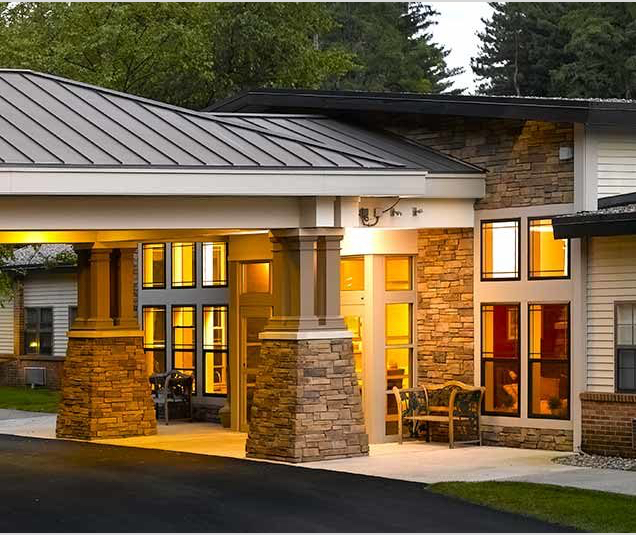When transitioning into assisted living, one of the biggest questions is, “What will my new space be like?” The decision to move into assisted living is about enhancing quality of life, gaining access to supportive care, and finding a sense of community. An essential part of this transition is understanding what assisted living offers and how rooms can be tailored to meet individual needs.
When moving into an assisted living apartment, you can expect living spaces that accommodate evolving needs, safety, comfort, and accessibility features, as well as options for personalization and customization.
What Is an Assisted Living Room?
Assisted living is designed for people who value their independence but require some assistance with daily tasks, such as medication management, dressing, or housekeeping. These communities are thoughtfully crafted to strike a balance between independence and support.
Purpose of an Assisted Living Room
The primary goal of these rooms is to provide a safe and comfortable environment that accommodates a resident’s evolving needs. Many residents find peace of mind knowing their space is not only functional but also designed with their well-being in mind. Assisted living rooms often come in a variety of styles, from studio apartments to one-bedroom layouts or even companion spaces for those who prefer to share their living environment.
Common Features
While features vary by community, most assisted living apartments include:
- A combined or separate bedroom and living space
- A private or shared bathroom, often equipped with safety features
- A small kitchenette or pantry for snacks and quick meal prep
- Emergency call systems for 24/7 access to help
- Accessible designs such as grab bars, non-slip flooring, and wide doorways for mobility aids
These features ensure functionality and a setting that fosters independence.
Key Features to Look For in an Assisted Living Room
When selecting an assisted living space, it’s crucial to ensure it meets the gold standards of safety, comfort, and accessibility.
Safety
Safety is a primary consideration in assisted living. Features like grab bars in the bathroom, emergency response systems, smoke alarms, and non-slip flooring are essential. Check for well-lit spaces with no tripping hazards to ensure peace of mind.
Comfort
The room should feel welcoming and cozy, ensuring residents feel at ease. Comfortable furnishings, ample natural light, and effective climate control can make all the difference. Consider whether the layout allows for easy movement and relaxation.
Accessibility
Look for design elements like wheelchair-accessible doors, adjustable fixtures, and walk-in showers. Even if mobility isn’t currently a concern, having an accessible design is an investment in adapting to future possibilities without hassle.
By prioritizing these features, this environment allows residents to live comfortably and with confidence.
Personalization & Customization
A house becomes a home when it reflects the resident’s personality and preferences. Assisted living apartments may not always be large, but creative personalization can transform the space into a cozy, familiar sanctuary.
Ideas for Customization
- Bring Personal Items: Photos, artwork, and keepsakes can instantly add a sense of familiarity and warmth.
- Decorate with Favorite Colors: Incorporate favorite hues in bedding, rugs, or throw pillows for a comforting, personal touch.
- Functional Decor: Multifunctional furniture like small ottomans with storage adds utility without cluttering the space.
- Plants and Greenery: Indoor plants can make the room feel vibrant and alive.
- Technology: Devices like a digital photo frame or voice-controlled assistant can add convenience and a modern touch.
Encourage loved ones to help with the setup. This collaborative effort fosters excitement for the transition while ensuring the space feels uniquely theirs.

Checklist for Choosing the Right Room
Selecting an assisted living room might seem overwhelming, but having a checklist can simplify the process. Here’s a practical guide to ensure you consider all the right factors:
- Room size and layout: Does it comfortably accommodate furniture and allow for easy mobility?
- Safety features: Are there grab bars, non-slip flooring, and emergency call systems?
- Natural light: Does the space have good lighting and feel warm and welcoming?
- Accessibility: Are features like showers, doors, and fixtures designed for ease of mobility?
- Proximity to community spaces: Is the room conveniently located near dining, activities, or gardens?
- Customization policies: Are there guidelines for decorating or bringing personal furniture?
- Amenities available: Are there additional perks like Wi-Fi, cable, or storage options?
Take time to visit a few options and assess how each room measures up to this checklist. A thoughtful decision can lead to a smooth, positive transition.
Finding a Space That Feels Like Home
Choosing an assisted living room is about creating an environment where comfort, individuality, and safety come together. By understanding key features, prioritizing safety and accessibility, and personalizing the room, you can ensure the transition to assisted living is an uplifting new chapter.
If you or a loved one is beginning this exciting transition, take a deep breath and know you’re not alone. This process is about creating a space that supports not only physical needs but personal growth and happiness.
Have additional questions or need professional guidance? Reach out to our team at Peregrine Senior Living at Guilderland—we’re here to help you make informed decisions and find a space that truly feels like home.













Such a delicious outing this afternoon to a Chinese restaurant near us for lunch! 😊 ... See MoreSee Less
3 CommentsComment on Facebook
Caregiving is an act of love that requires time, energy, passion, and strength. Today, show a caregiver how much you appreciate them and thank them for all they do.
Together, we can create a circle of compassion and care—for caregivers and those they care for.
peregrineguilderland.com/ ... See MoreSee Less
0 CommentsComment on Facebook
Attached is our November calendar for our memory care residents! 🍁🍂🐔 ... See MoreSee Less
view.illustratus.com
illst.us
0 CommentsComment on Facebook
Happy November! Attached is our November calendar for our assisted living residents! 🍁🍂🐔 ... See MoreSee Less
view.illustratus.com
illst.us
0 CommentsComment on Facebook
Happy Halloween to you and your family!
Today is about the simple joys of the season. May your day be filled with festive treats and warm memories!
peregrineguilderland.com/ ... See MoreSee Less
1 CommentsComment on Facebook
Oktoberfest themed around the world party this month! We watched the parade that was taped last month in Germany, played trivia, had fun decorations, and ate delicious soft pretzel bites with beer cheese! Thank you all for coming! 🥨🍻 ... See MoreSee Less
2 CommentsComment on Facebook
Halloween staff parade and Halloween party all in one day makes fun filled day!! 👻🎃🕸️🍭🍬 ... See MoreSee Less
4 CommentsComment on Facebook